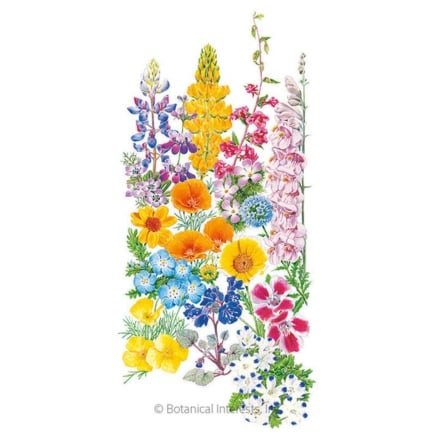Native wildflowers are excellent choices for empty soil. They thrive with little maintenance or care, providing endless blooms with few inputs. Blue thimble flower, also known as Gilia capitata, is one such native wildflower—it’s drought hardy, full sun tolerant, and adapts to many different soil types.
I first saw this plant at a native plant garden in Oregon. It burst into bloom in midsummer, with dozens of bees flocking to its flowers. At that moment, I knew this was a wildflower to treasure. I collected some seeds and sowed them in my garden. Now I have annual blue globe-shaped blossoms every summer! It’s that simple.
Blue thimble flower thrives throughout meadows, grasslands, and chaparral landscapes in the western United States. Find it naturally amongst common madia, native grasses, and California poppies. It comes to fruition in late spring or midsummer as ephemeral wildflowers fade. Plant it in the same area as checkermallow, western spring beauty, or large leaf avens to stagger continuous blooms.
Whether you’re new to native wildflowers or a seasoned enthusiast, the blue thimble flower is a wonderful plant for West Coast gardeners. Consider adding it wherever you have full sun and good drainage.
California Wildflower Mix
California Color Flower Seeds
Save the Bees Flower Mix
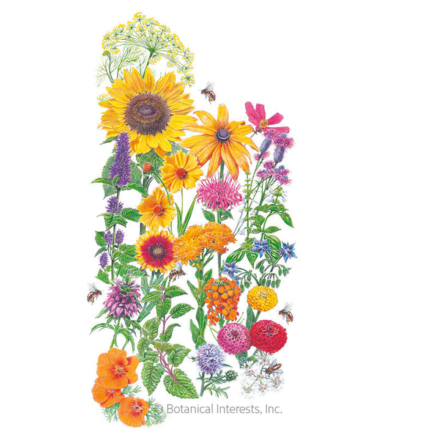
Save the Bees Wildflower Seeds
Prairie Blend With Gilia
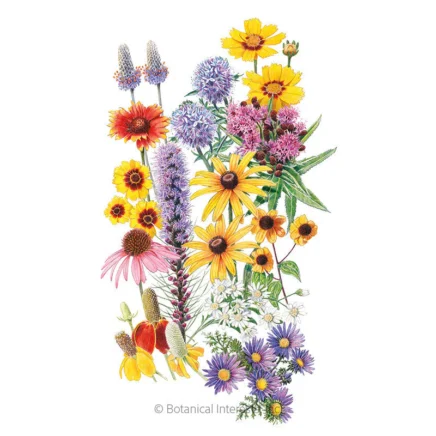
Prairie Splendor Flower Mix Seeds
Gilia capitata, Blue Thimble Flower Overview
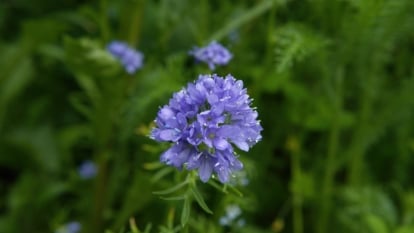
|
|
What Is It?
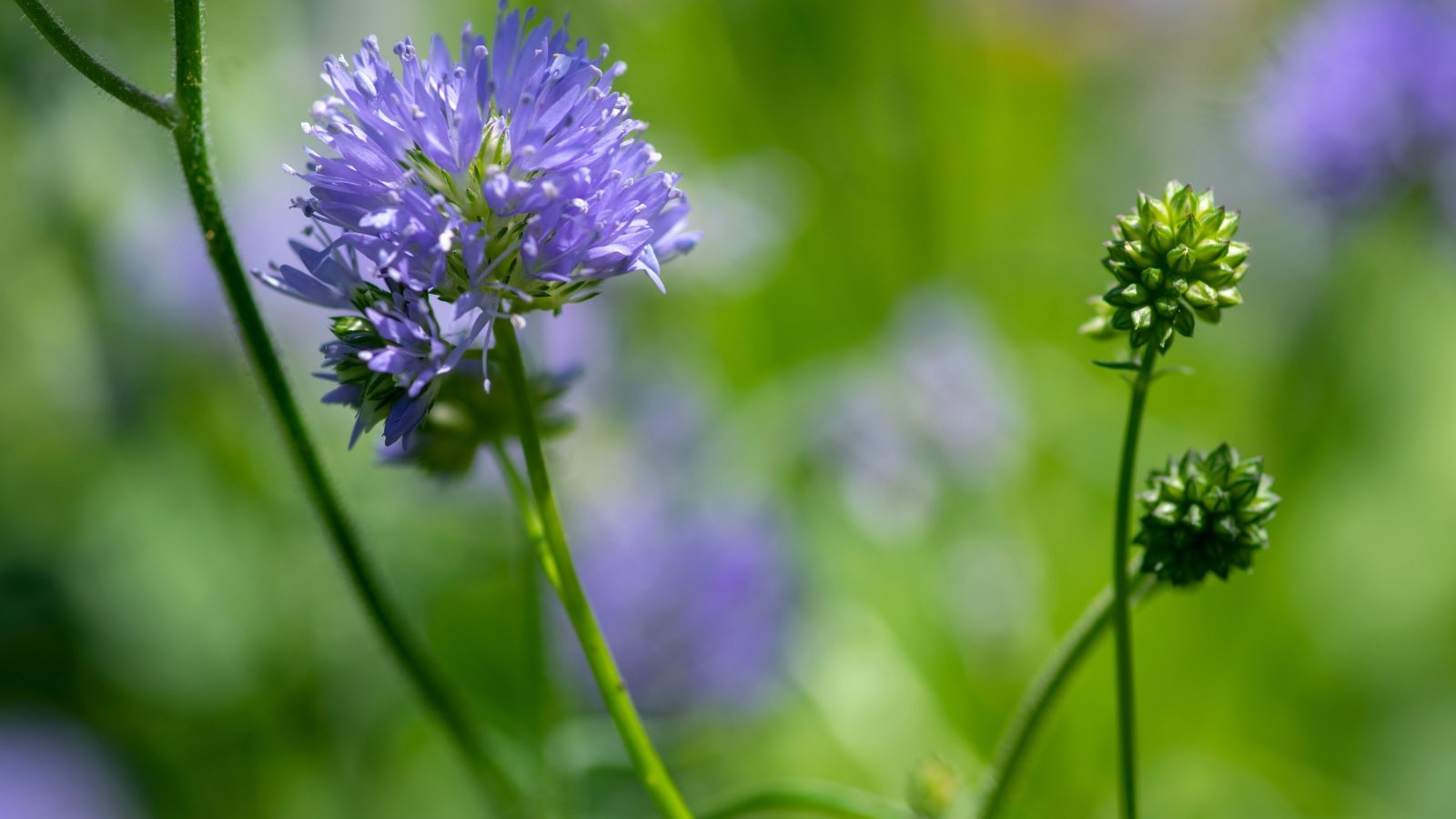
The blue thimble flower is an annual wildflower in the phlox family. It is a close relative of “bird’s eyes,” another California native plant in the genus Gilia. It also goes by the names blue gilia and globe gilia.
Each spring, seeds germinate into little clusters of fancy, dissected foliage. The leaves resemble divided parsley leaves at first glance—look closer and you’ll notice your blue thimble flower’s foliage is lacier and more succulent than parsley.
Native Area

Find blue thimble flowers flourishing from British Columbia south through California, and east to the Rocky Mountains. They prefer locales with six to eight hours of direct sunlight. This means they thrive in meadows, as well as in valleys, chaparral ecosystems, and rocky hillsides.
These wildflowers prefer warm temperatures to set flowers and seeds. As days grow longer, blue thimble flowers grow taller. They adapt to clay soils, although they benefit from additional shade and drainage when growing in clay.
Characteristics
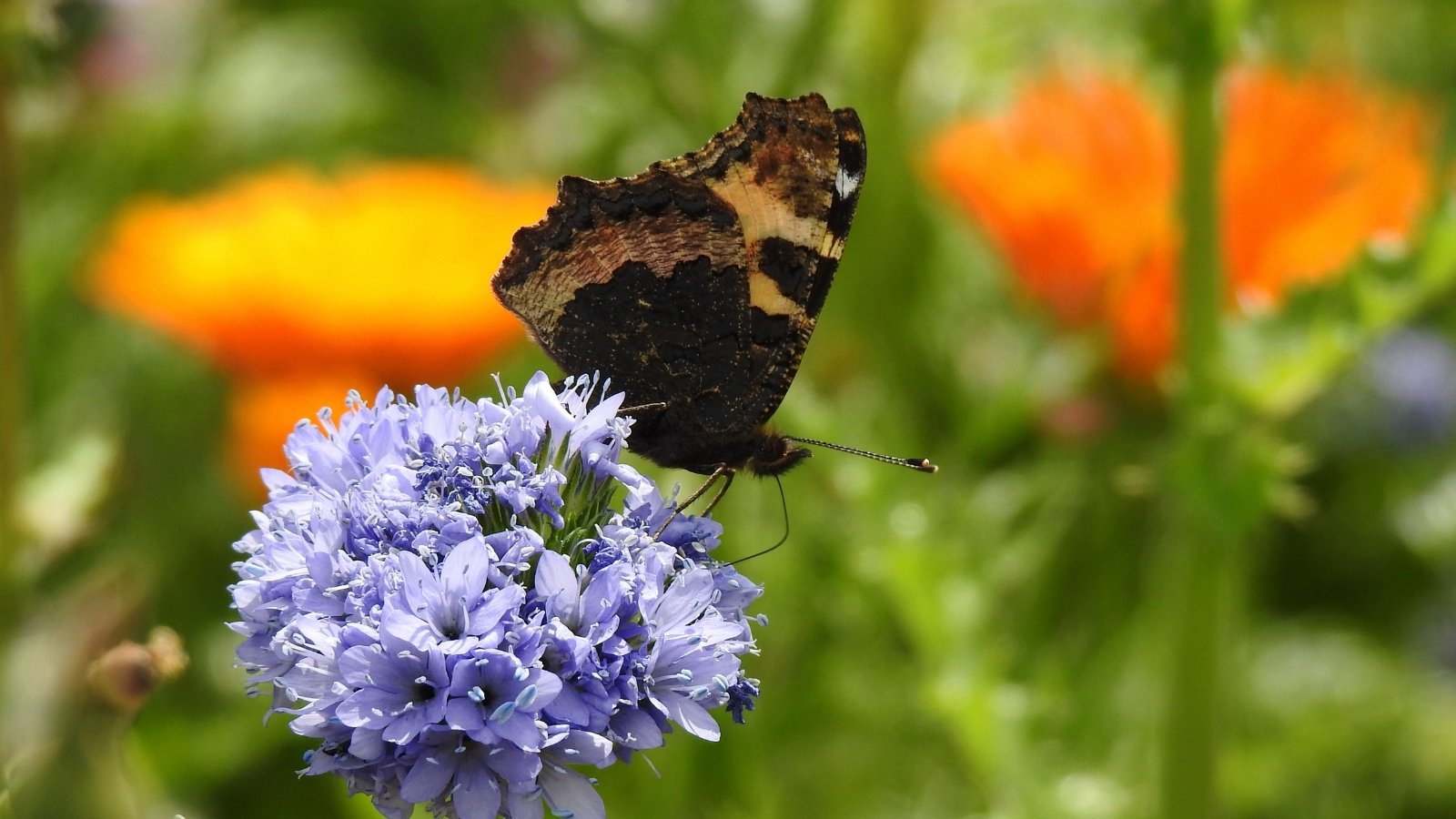
Gilia flowers are one of the greatest pollinator magnets! Their flower clusters contain loads of blue pollen and nectar; native bees, bugs, and birds flock to them for sustenance. If your vegetable garden is low on pollinators, this is a good annual to sow amongst them. As they bloom, they’ll help bugs pollinate your crops.
Delightful wildflowers are often easy to care for; this species is no different. Plants reseed readily on bare soils at the end of their lifetimes. Do not fret if you notice your plants dying after they form seeds—that is a part of these annuals’ natural life cycle. They bloom, form seeds, and then die before winter cold arrives.
Because they are reseeding annuals, these wildflowers don’t function well with competition. They typically grow year to year in areas where their seeds readily access light, soil, and water. Where perennials thrive, they may overshadow young thimble seedlings and prevent them from germinating.
Planting
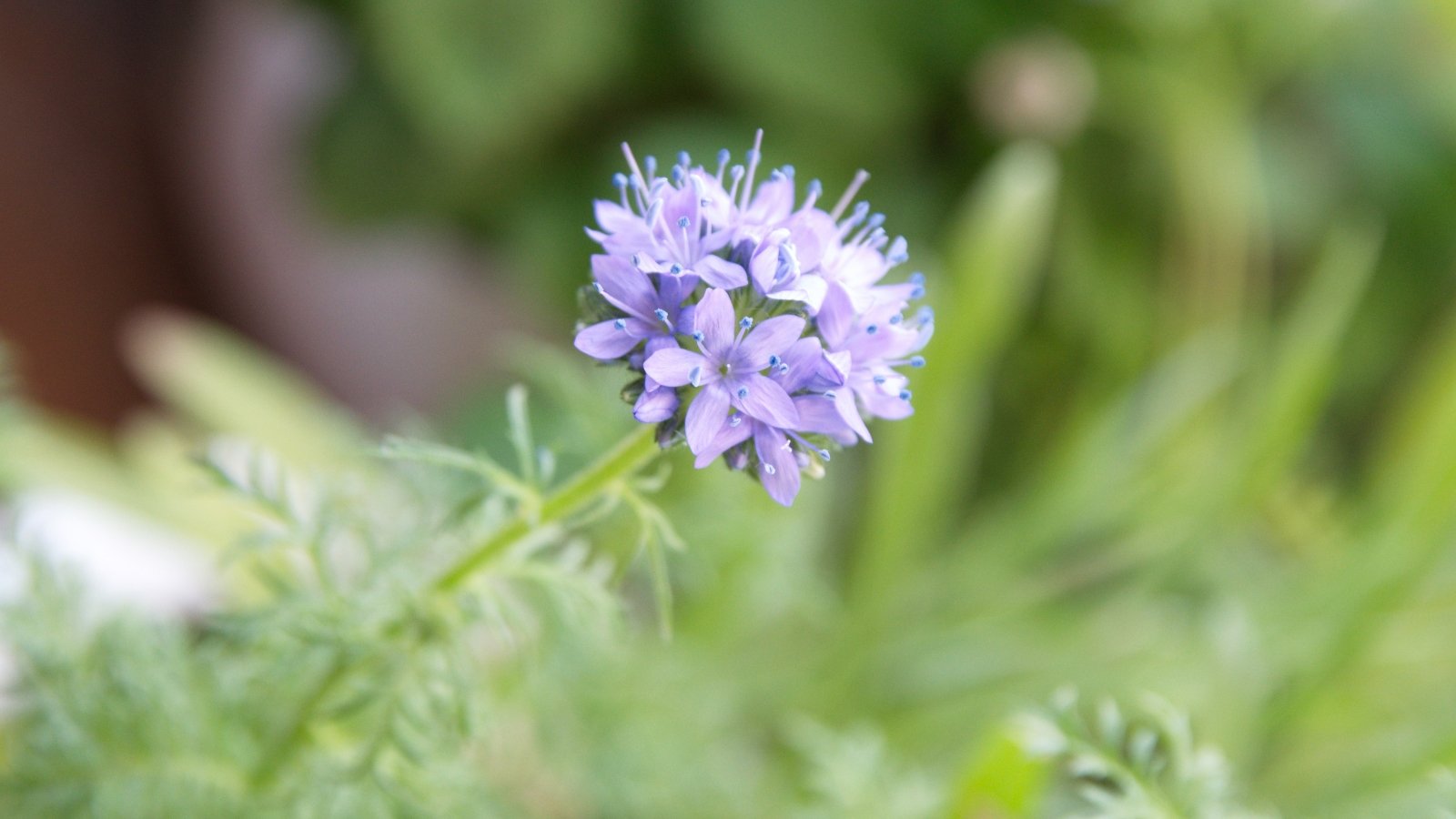
Blue thimble flowers flourish wherever they grow—they work well in containers, raised beds, borders, or wild plantings. So long as they receive good drainage, low water, and full sun, these annuals will pop up every spring from seeds.
These wildflowers don’t grow over three feet, so you can plant them in small or large spaces. Some species they work well with are sunflowers, purple coneflowers, and western buttercups. These plants aren’t overly competitive, and they’ll leave some bare soil so the seeds can germinate.
Growing from Seed
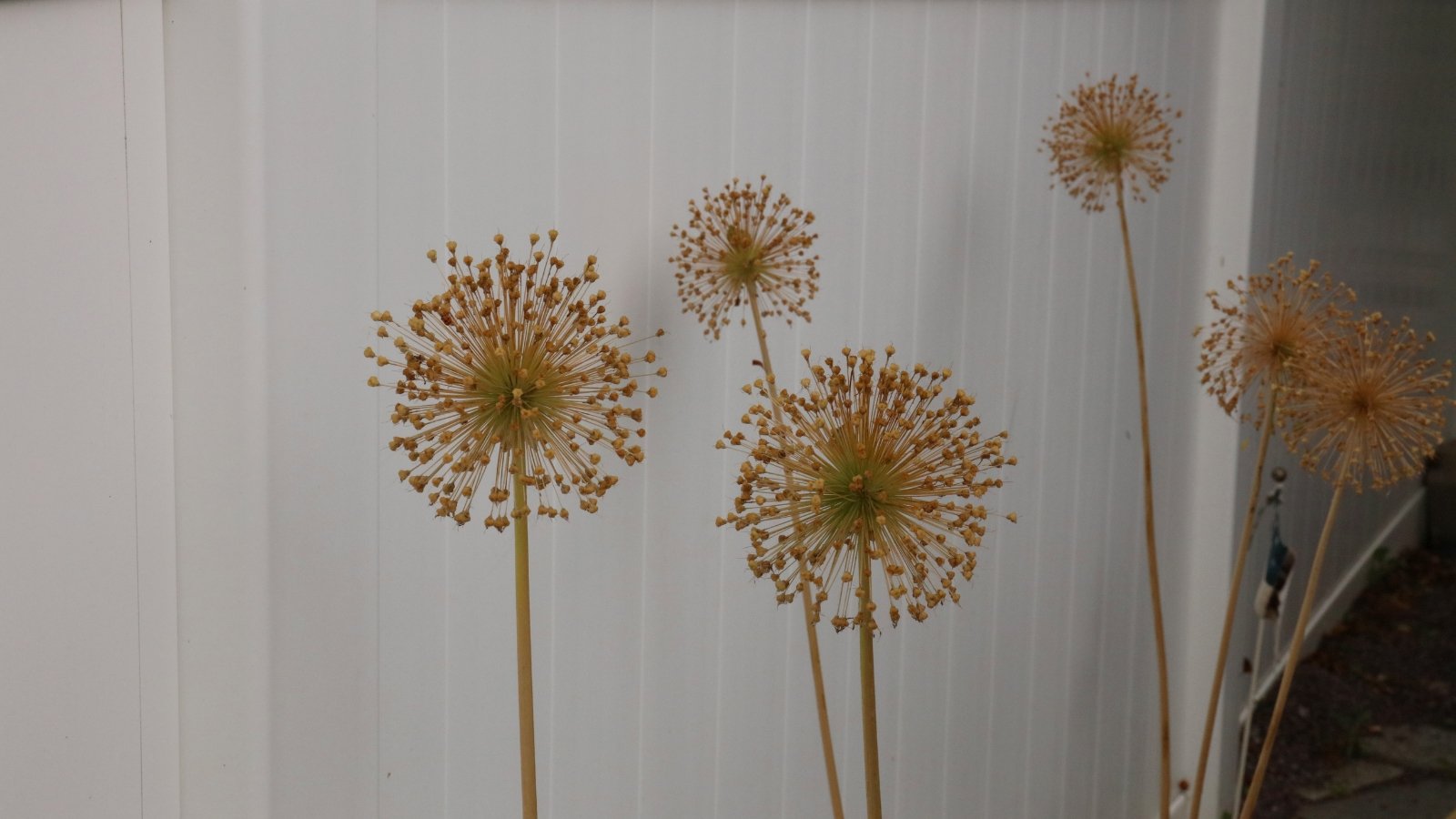
Seed sowing is the easiest way to start this wildflower. Sow seeds in spring or fall on bare soil—you can lightly cover them to keep them in place with an eighth-inch layer of soil, although this isn’t necessary. Blue thimble flowers naturally reseed themselves on the surface.
Once you’ve broadcast your seeds, water the area well. Fall-sown seeds will germinate earlier than spring-sown ones. Determine whether you’d like early, late, or continuous blooms, and sow accordingly.
Find these seeds alone, or in wildflower mixes. They often make up wonderful pollinator mixes with other native phlox, sunflowers, and wallflowers.
Transplanting
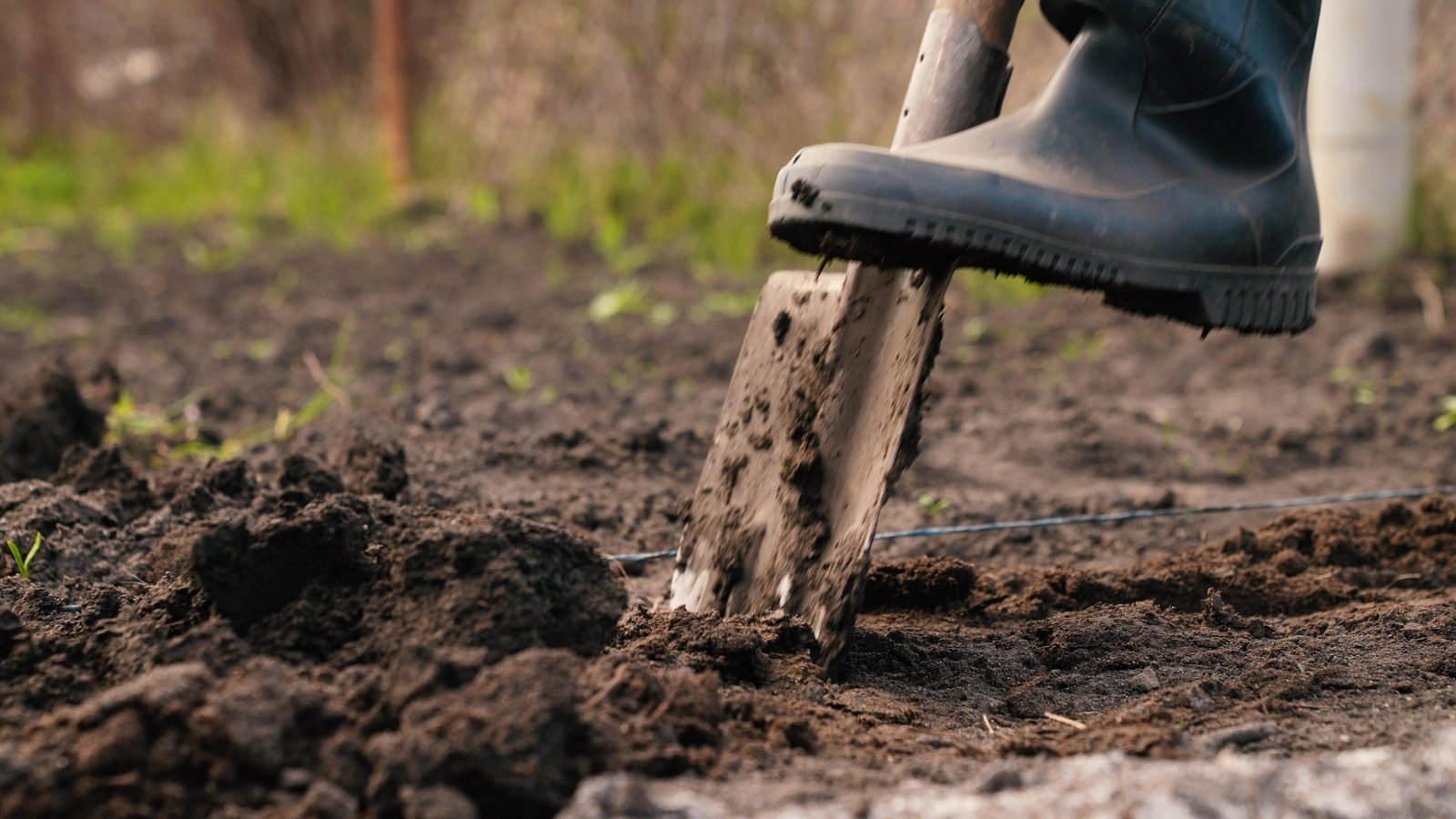
Don’t worry if you missed seed sowing, as you can often find these annuals in pots at nurseries before they bloom. Transplant young plants without blooms into your garden from spring to early summer. Dig a hole as deep and twice as wide as the root ball. Then, put the roots in the hole and backfill until soil covers them.
Water the soil well to help your transplants establish themselves. After a week or two of consistent watering, you can cut back on your schedule. Overwatering established gilia causes root rot; avoid this by watering less as these wildflowers begin to bloom.
How to Grow
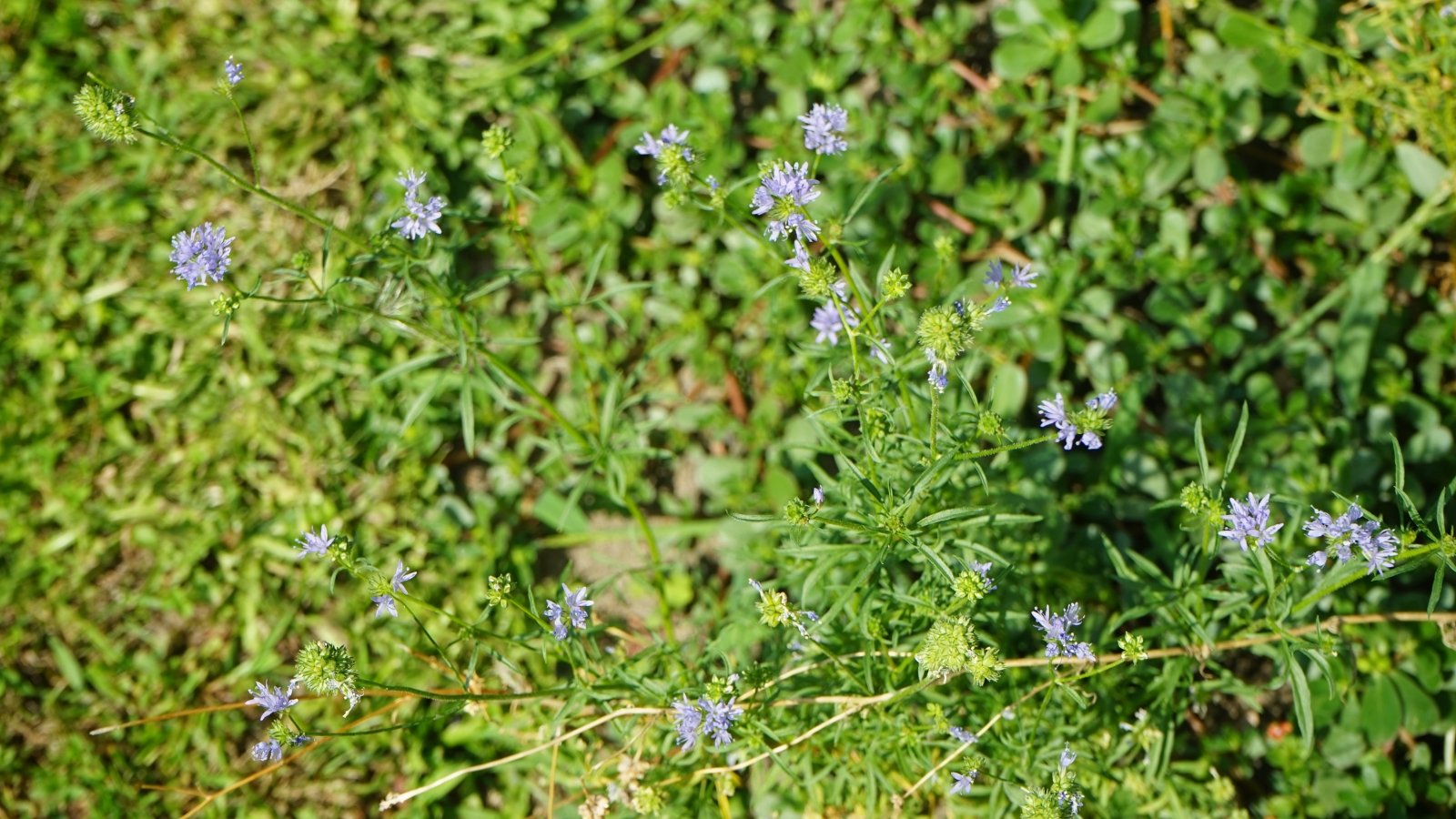
Blue thimble flowers grow easily from seeds. They’re so prolific, they’ve spread and naturalized in some regions in the eastern United States! Care is so simple that you’ll wonder why you don’t have these wildflowers in your garden already.
Light
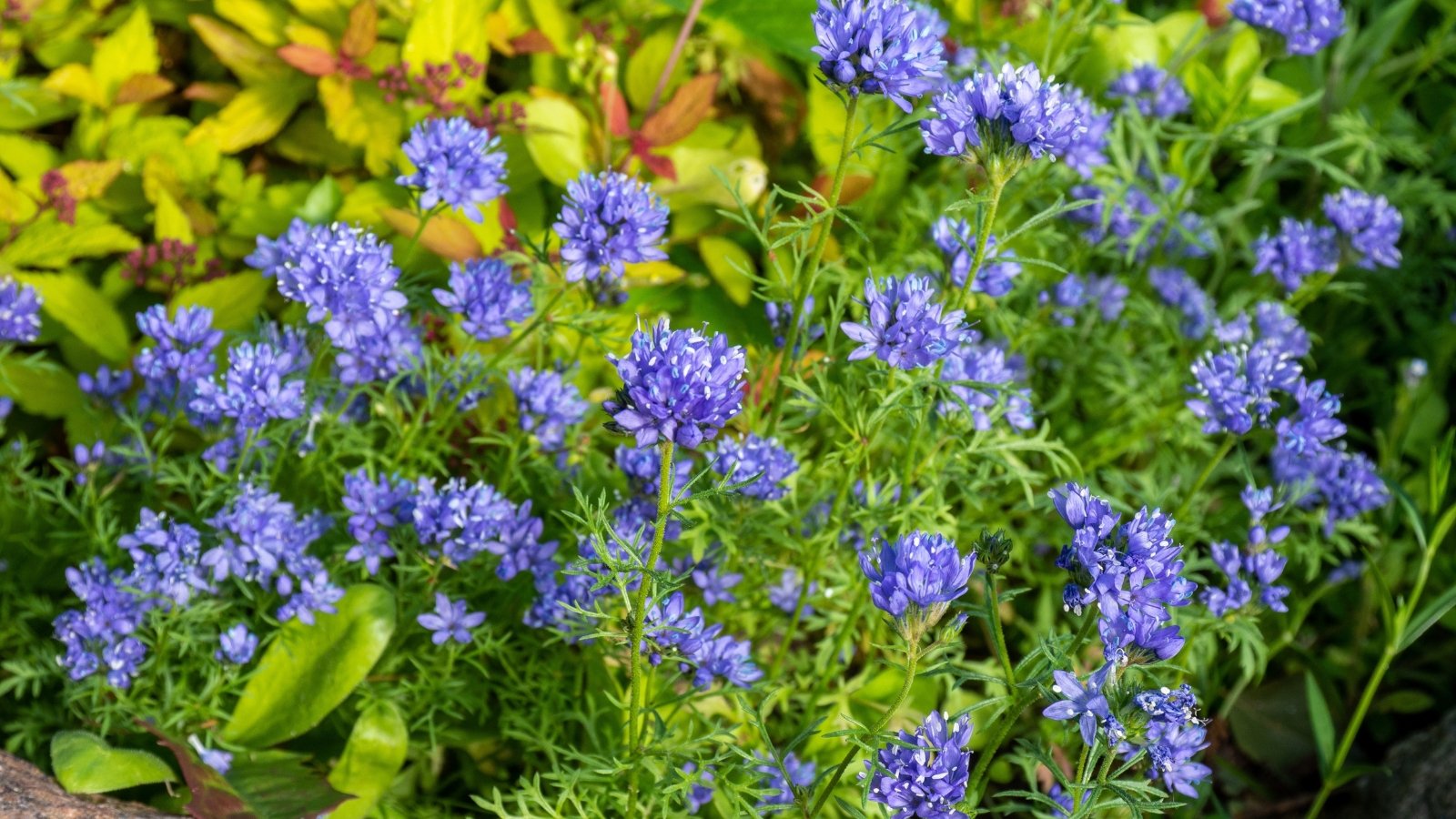
These native flowers appreciate full sun—they need six to eight hours of direct sunlight daily. They’ll grow in partial shade, but not as well as if they’re under full sun. The only time you’ll want to choose partial shade is if your soil is clay; in clay soil, these wildflowers benefit from some shade from the afternoon sun.
Water
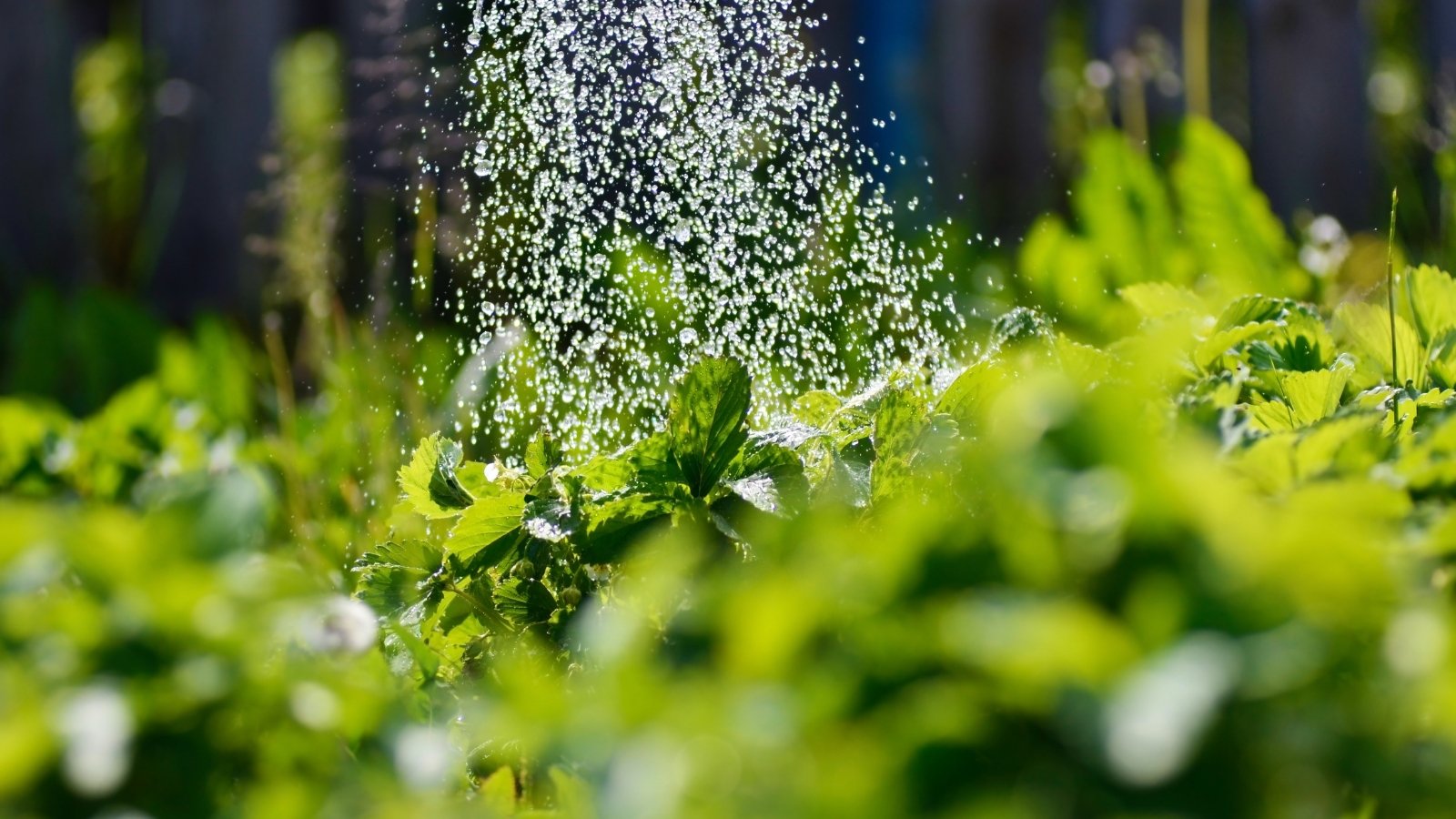
Blue thimble flower is a low-moisture plant. It survives harsh direct sun and drought throughout its native range. These wildflowers often take advantage of spring or early summer rains, soaking up the water. They then bloom and set seeds for the next generation before dying back.
You’ll want to simulate these natural conditions within your garden. Water if early spring rains are absent; don’t water if you have continuous spring rainfall. These plants need considerably less water as they flower and set seeds, so you may not have to water while plants grow and bloom. In the native plant garden near my home, these annuals survive without additional irrigation through the summer.
Soil
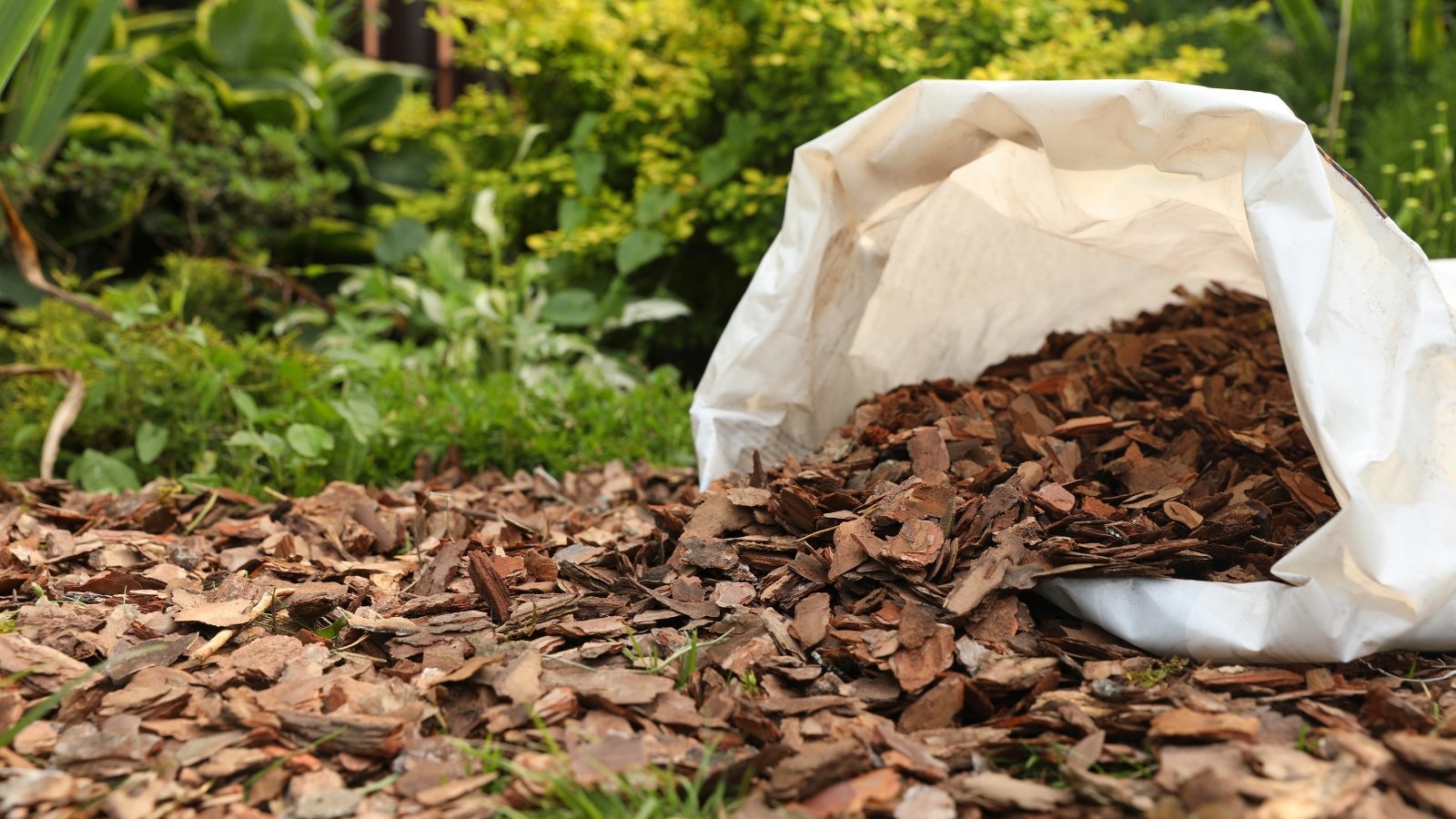
Gilia plants must have adequate soil drainage to survive. They function poorly in waterlogged, boggy, or moist soils. Plant them in sandy or rocky locales where water drains freely. They benefit from some organic matter in the soil but rarely need extra fertilizer.
Mulch or compost benefits these native flowers—apply it once or twice a year around the plants’ stems during spring or summer. A top layer of mulch simulates organic matter in the wild that naturally falls and decays around established plants. Avoid placing compost down after this plant has sown seeds in the fall, as a thick layer of organic matter can stifle germination next spring.
Fertilizing
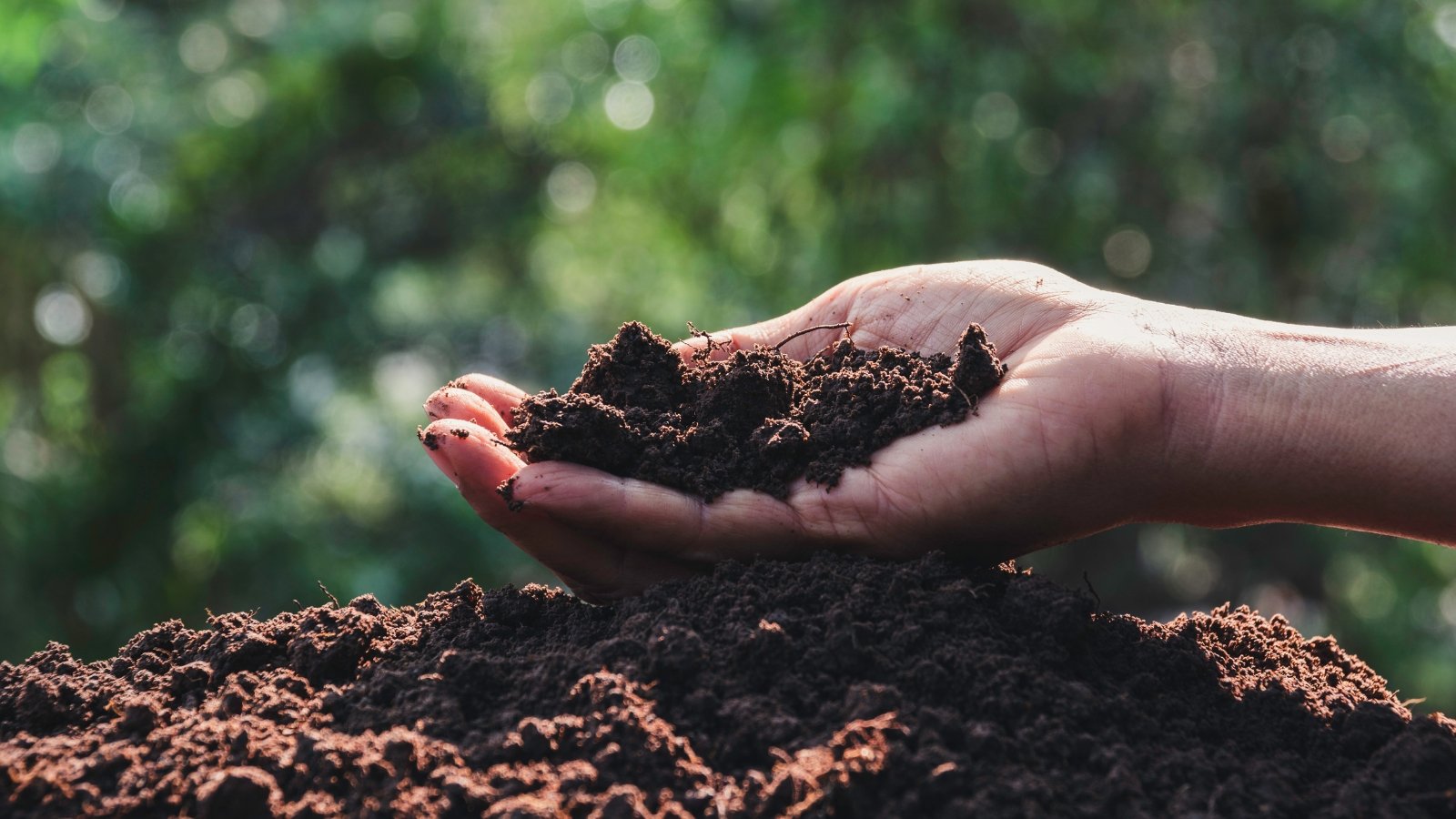
Fertilizer is not necessary! Compost or mulch applications once or twice a year supply the nutrients this wildflower needs to survive.
Maintenance
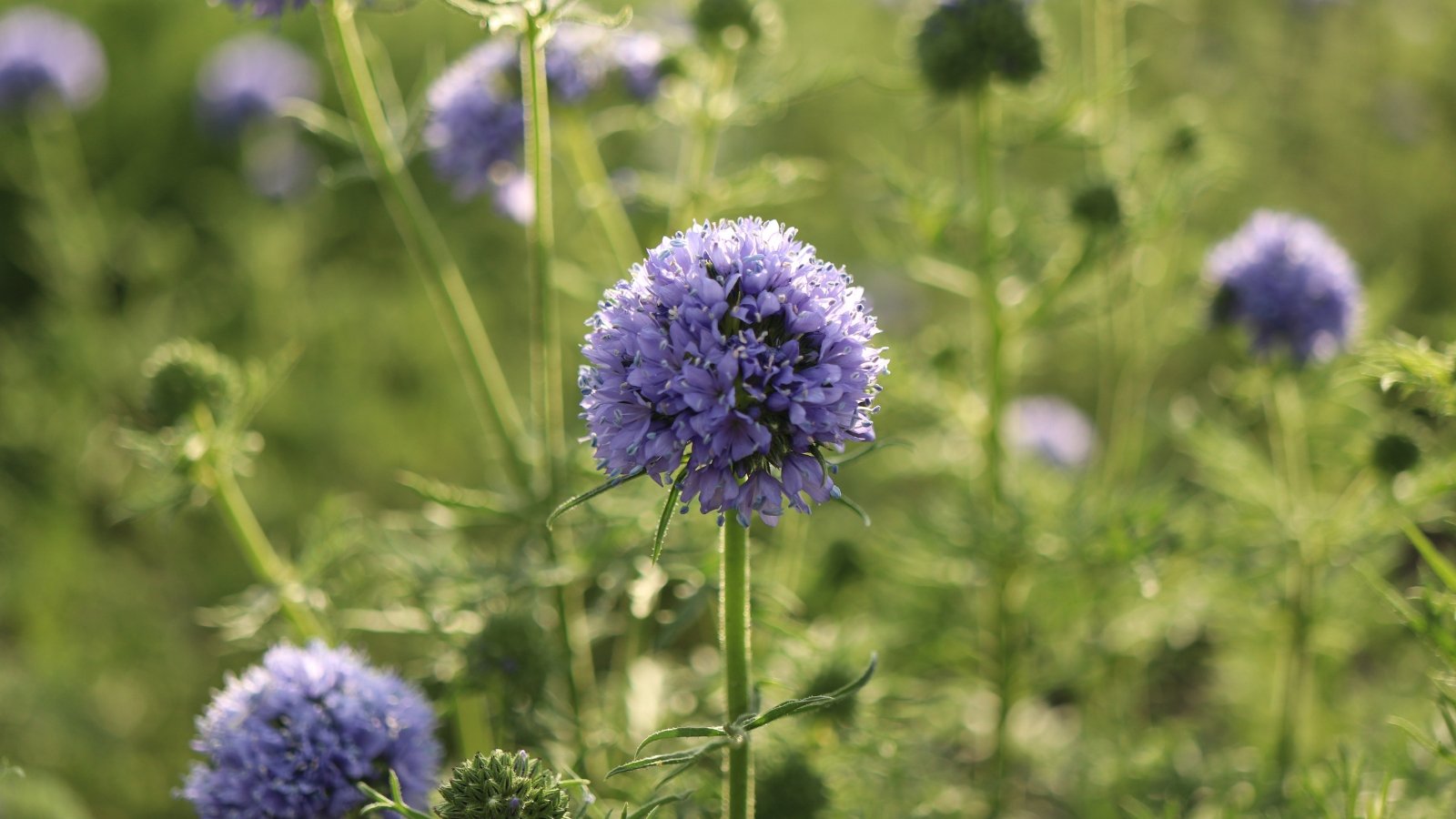
You have control over this plant’s life cycle in your garden. Deadhead spent blooms to force new blue pincushion flowers. Deadheading tricks the plants by convincing them they haven’t produced seeds yet. They’ll keep blooming until winter frost arrives.
Deadheading also prevents self-sowing. If you’d rather this wildflower not spread, cut spent blooms before they drop seeds.
Propagation
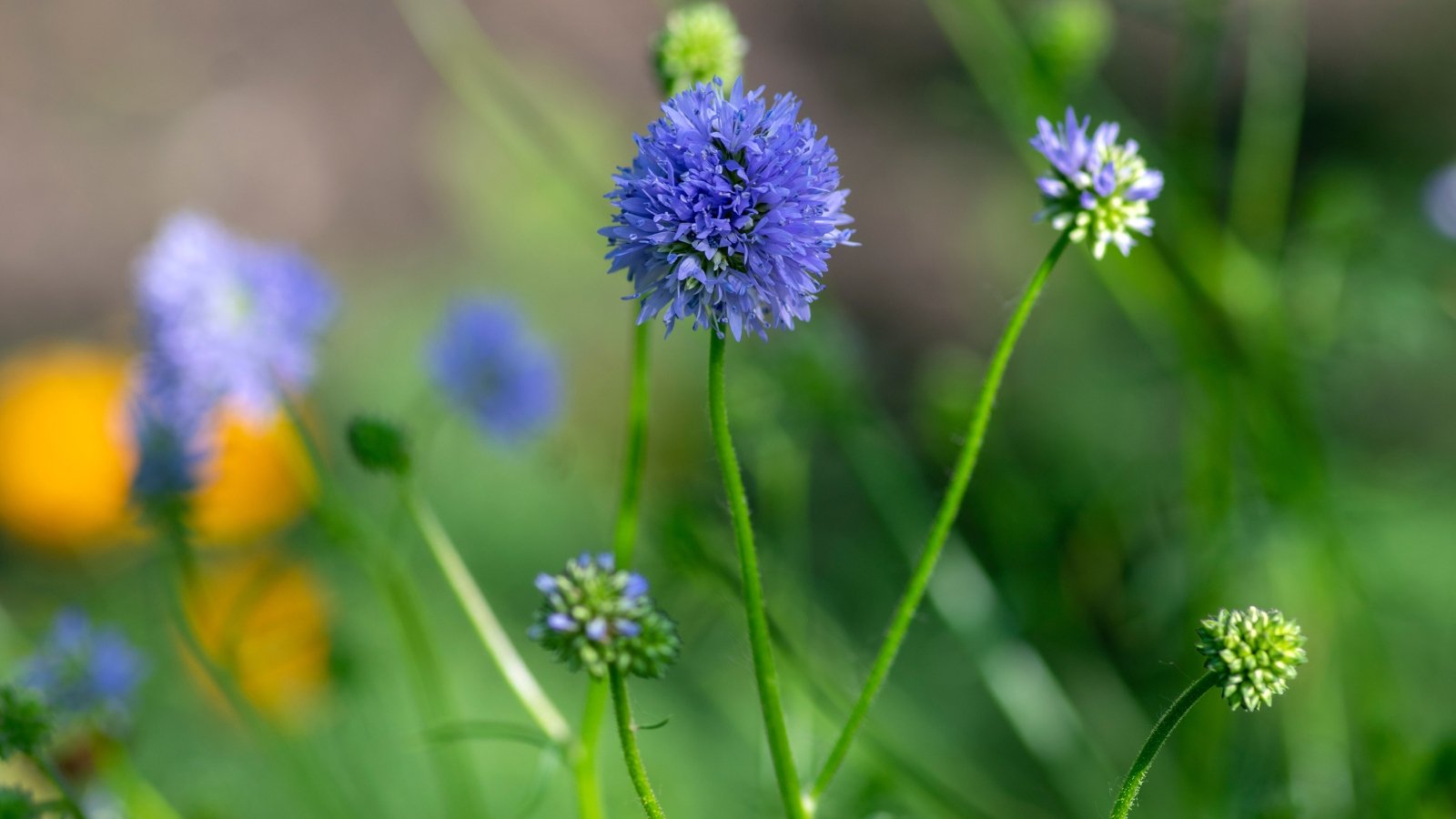
Annuals don’t typically propagate like other plants–you can’t take cuttings or divisions of this native species. The main way they reproduce is through self-sown seeds. Utilize these seeds to influence where they germinate.
Self-Seeding
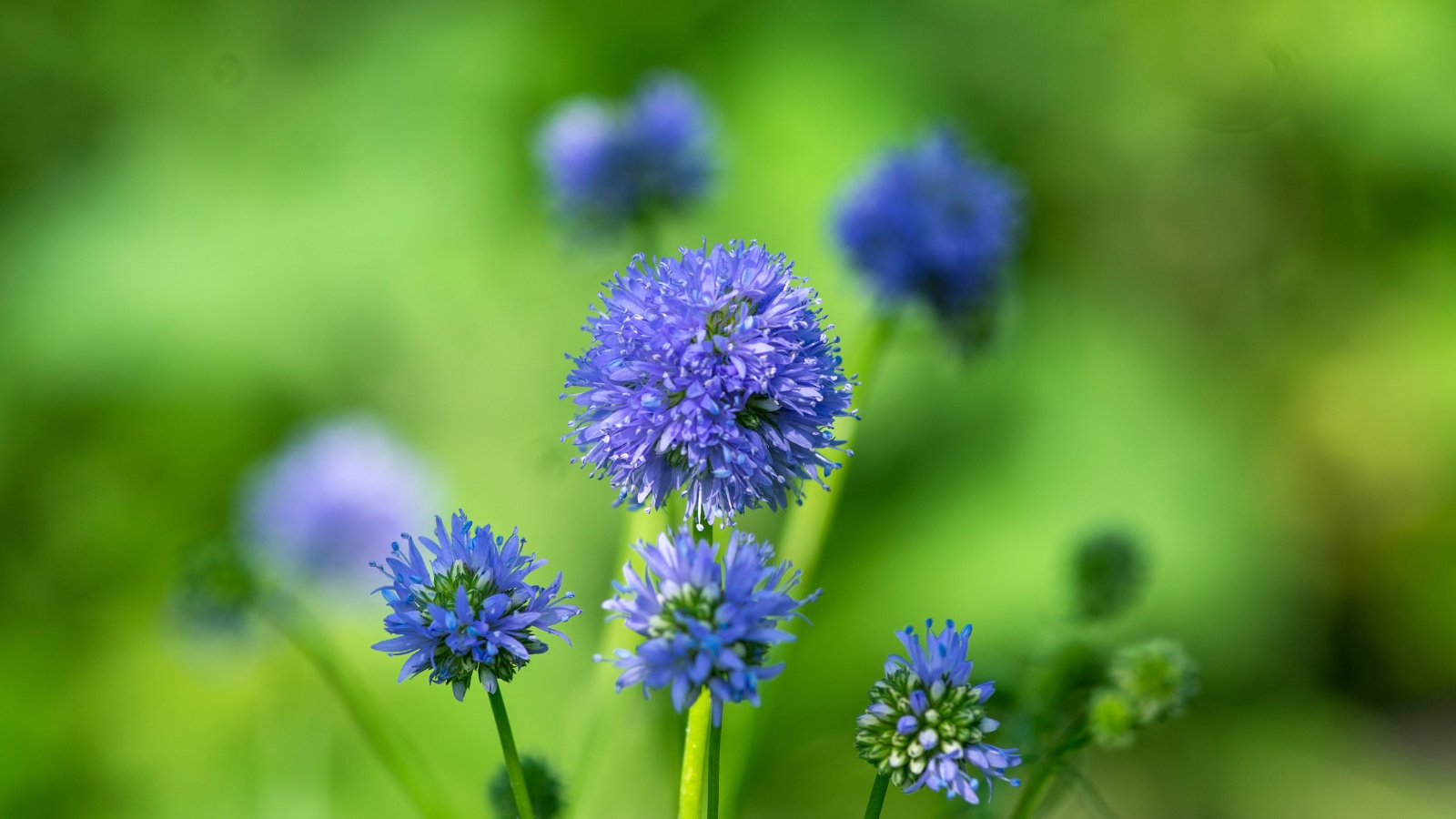
Blue thimble flowers self-seed readily—I’ve seen them blanket landscapes with bright flower clusters! Let your dying plants seed themselves, or collect seeds before they fall. Start looking for seeds from midsummer onwards. They’re small and black, and they fall readily from bloom clusters when you shake them.
Sow collected seeds in fall or spring. They’ll germinate naturally with your annual rainfall cycle. In dry areas of Southern California, water seedlings in the absence of rain. Avoid watering already wet soil so these seedlings fare well as they reach for sunlight.
Popular Varieties
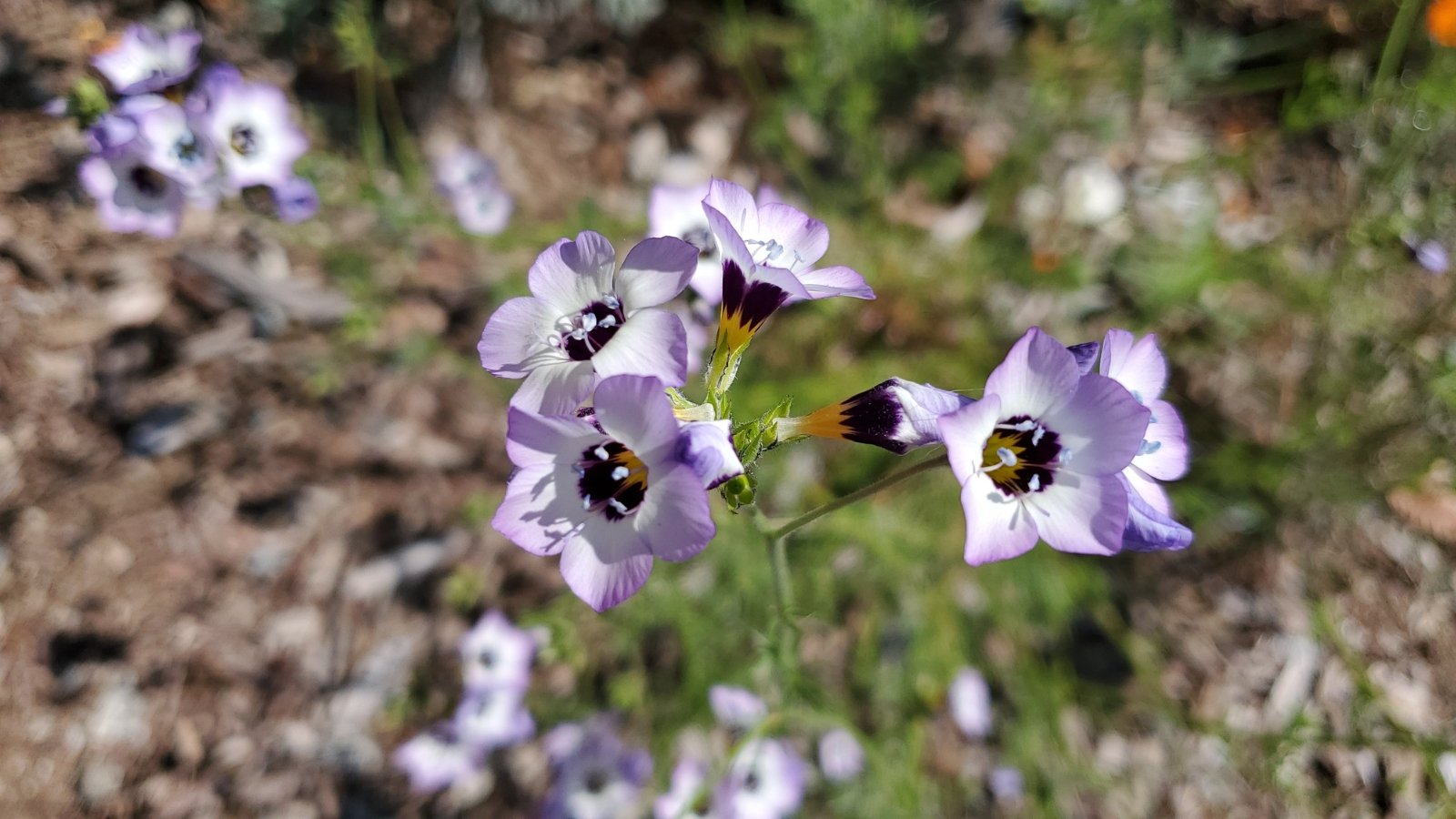
Other species of Gilia behave similarly to blue thimble flowers. Try bird’s eyes, Gilia tricolor, throughout California. This type has large flower clusters with white, violet, and blue hues.
Another two relatives are excellent in gardens, as they tolerate more irrigation than blue thimbles. These perennials Ipomopsis aggregata and Ipomopsis rubra used to be in the Gilia genus because they’re immensely similar. Instead of blue blossoms, though, they sprout red-yellow flowers on tall stems. Ipomopsis rubra reaches six feet tall in its native range of the Southern United States—give it space to roam!
Common Problems
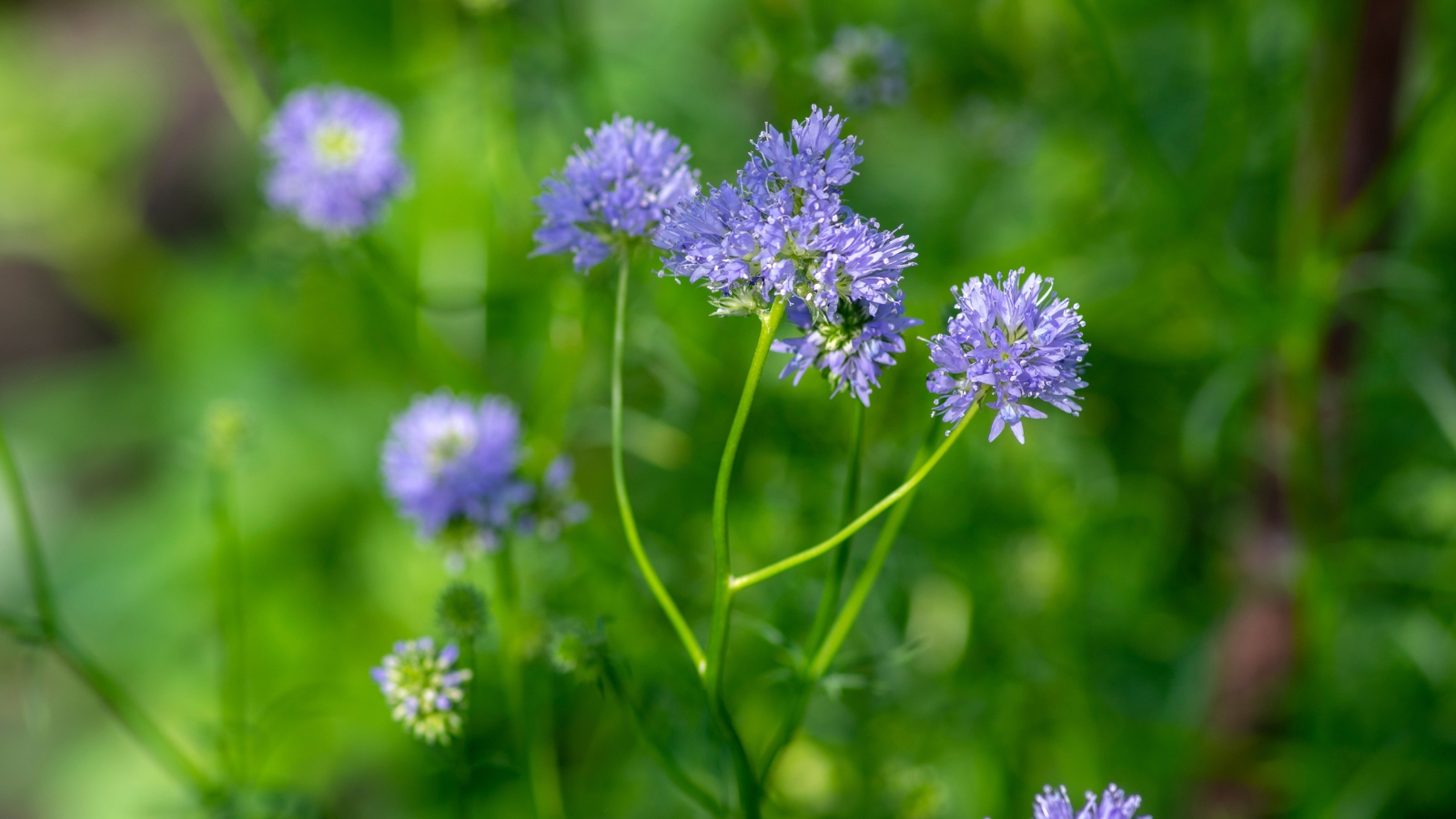
These annuals experience relatively few issues throughout their lifetimes. Watch for aphids, root rot, and powdery mildew. These conditions rarely kill these wildflowers, as they’re incredibly resilient to outside forces.
Pests
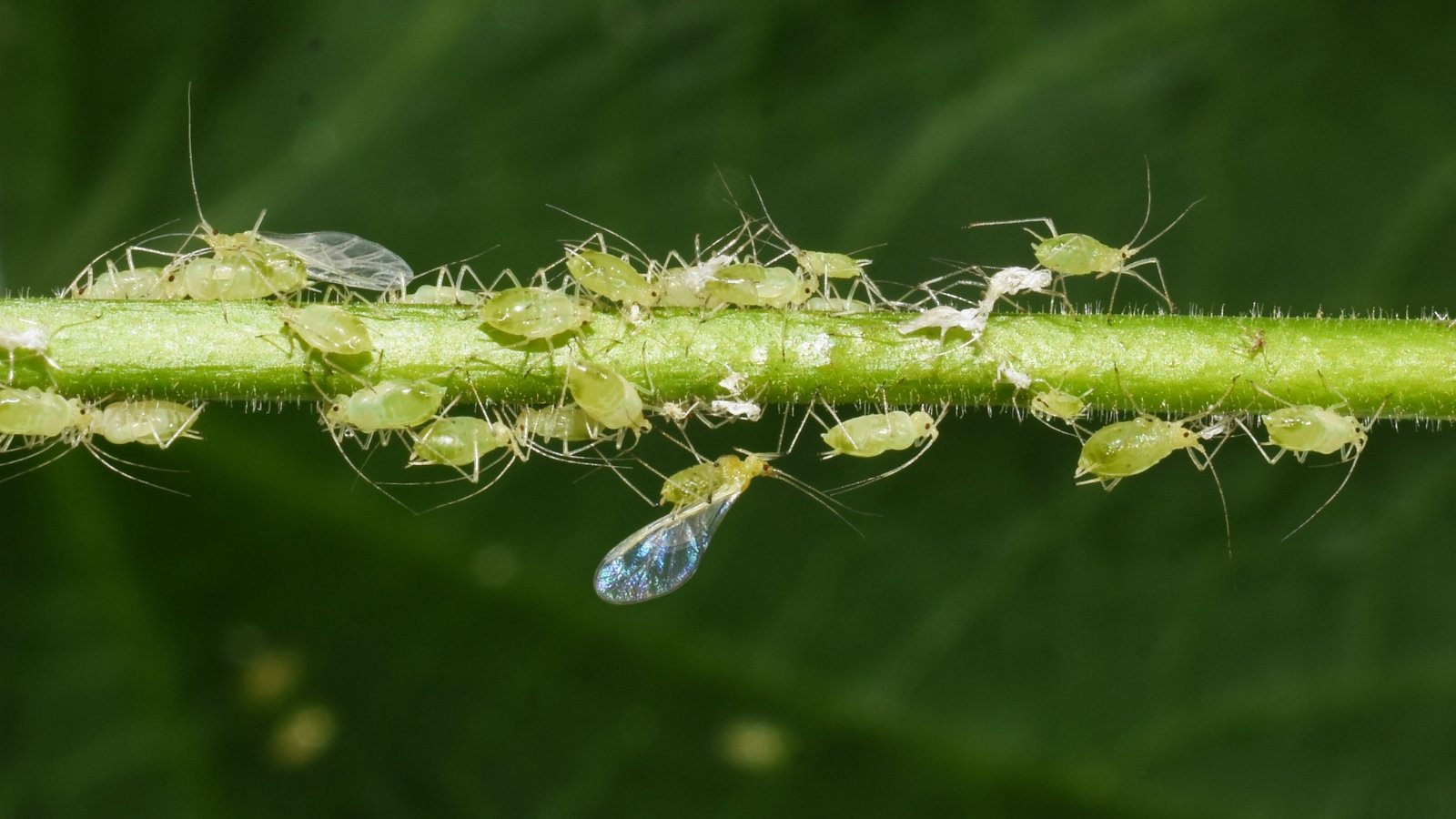
Aphids love juicy plant material. They use their sucking mouth parts to feed on leaves, stems, and flowers. Remove them by spraying strong streams of water on your plants daily for a week. Check after a week to see if they’ve gone away. If they’re still there, continue spraying daily for another week.
If the aphids aren’t causing too much damage and their population is small, consider leaving them be. Aphids are tasty snacks for ladybugs, birds, and parasitic bugs. Small populations attract predators over time, making your garden more resilient to change.
Diseases
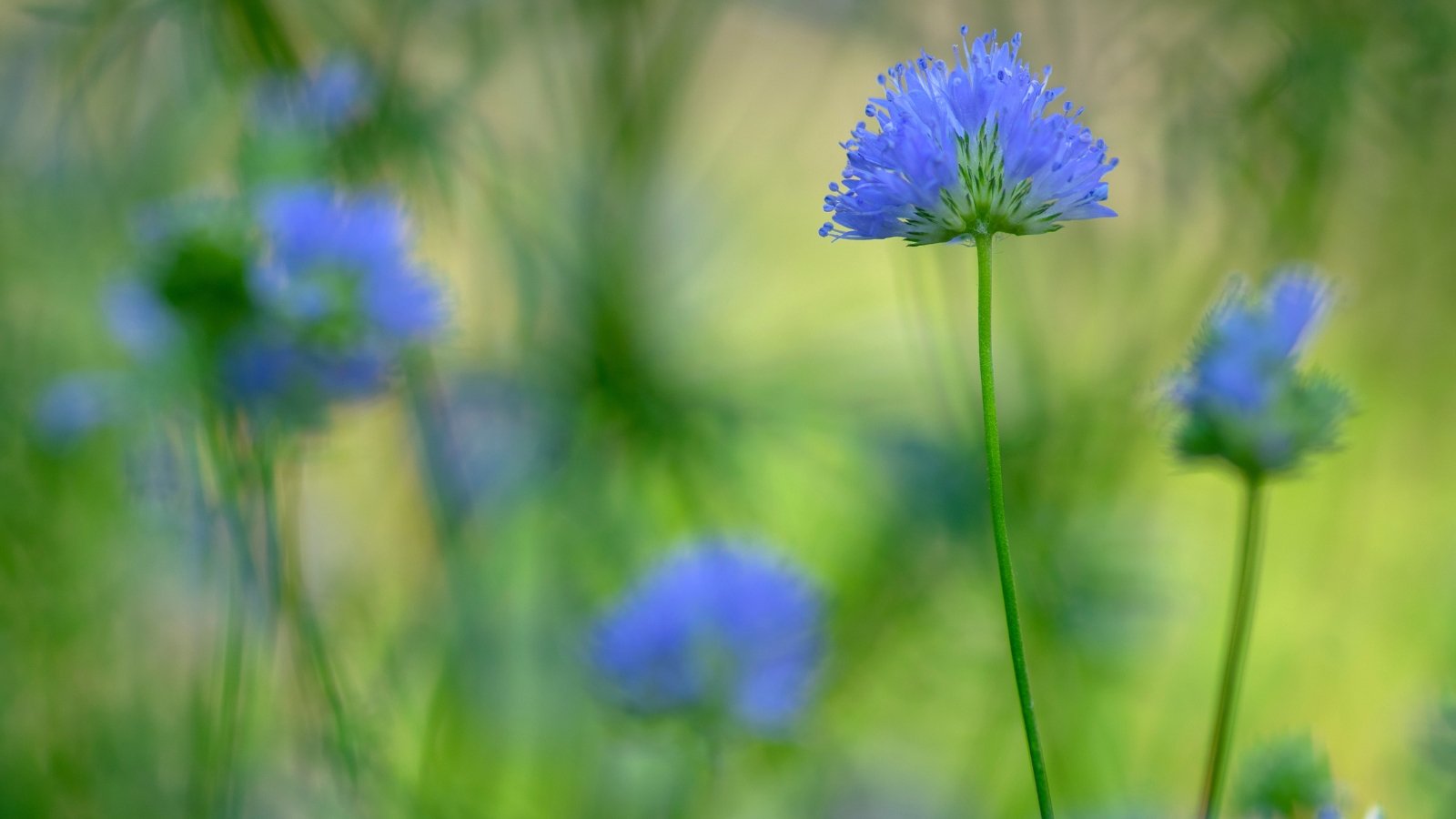
Three diseases commonly infect blue thimble flowers. Let’s deal with them!
Root Rot

Wildflowers get root rot when they’re in unsuitable soil conditions, or with excess moisture. Blue thimble flower is exceptionally drought tolerant, but this means it struggles to deal with extra water. Once this wildflower’s roots start rotting, there is little you can do to save it.
Avoid root rot in the future by planting this wildflower in full sun with well-draining soil. It can handle partial shade if it grows in dry, clay soil.
Powdery Mildew
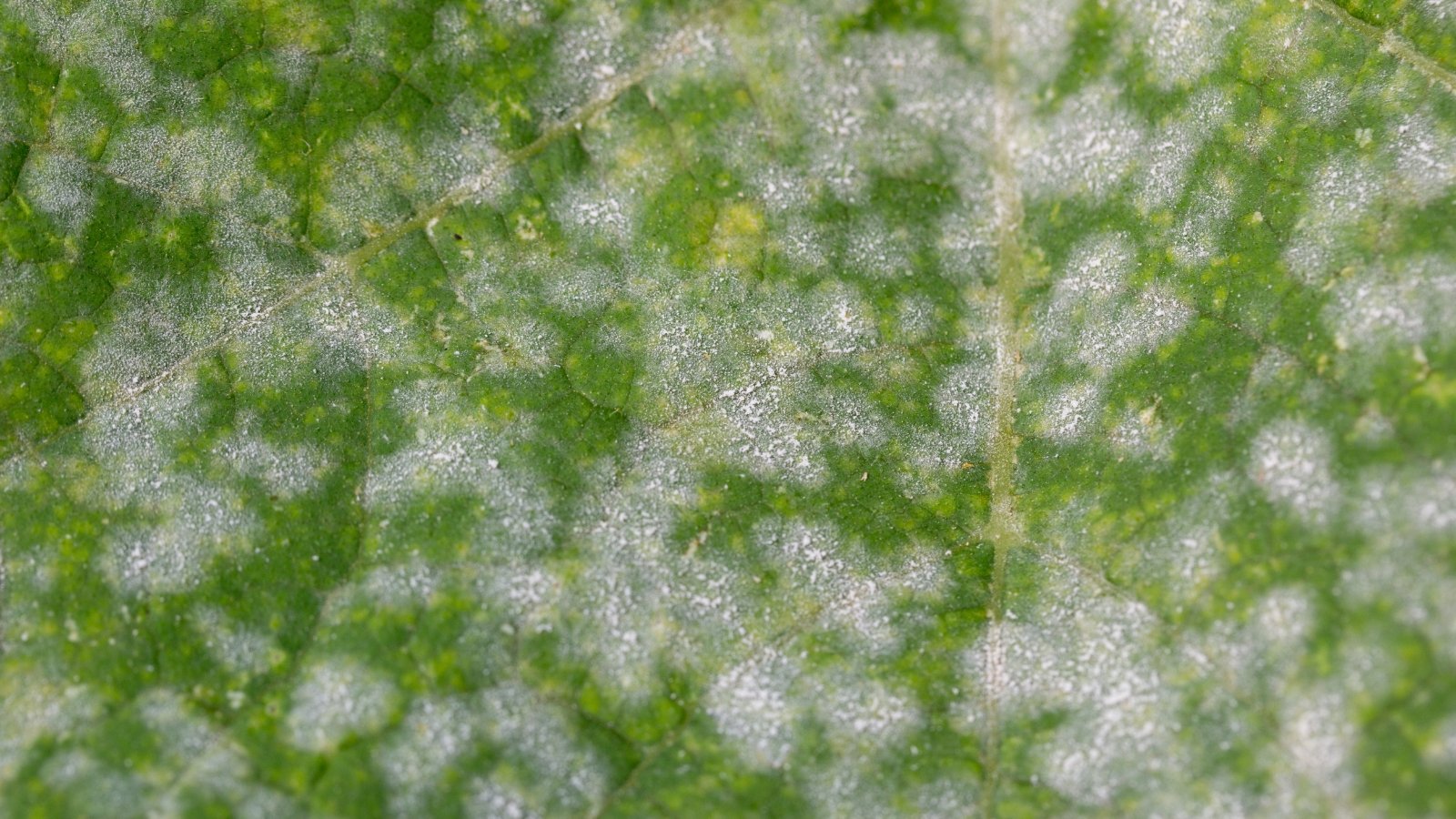
Powdery mildew is more of a nuisance than a threat. It develops a whitish-gray fuzzy coating on developing leaves. This makes it harder for them to photosynthesize, eventually causing yellowing and leaf drop.
One surprising method that works against powdery mildew is milk spray! Mix one part milk with two parts water, and spray daily until powdery mildew disappears. If you’d rather not smell rotting milk in your garden, try using an organic sulfur fungicide. If infections are small, all you need to do is cut off affected foliage to keep it from spreading.
Rust
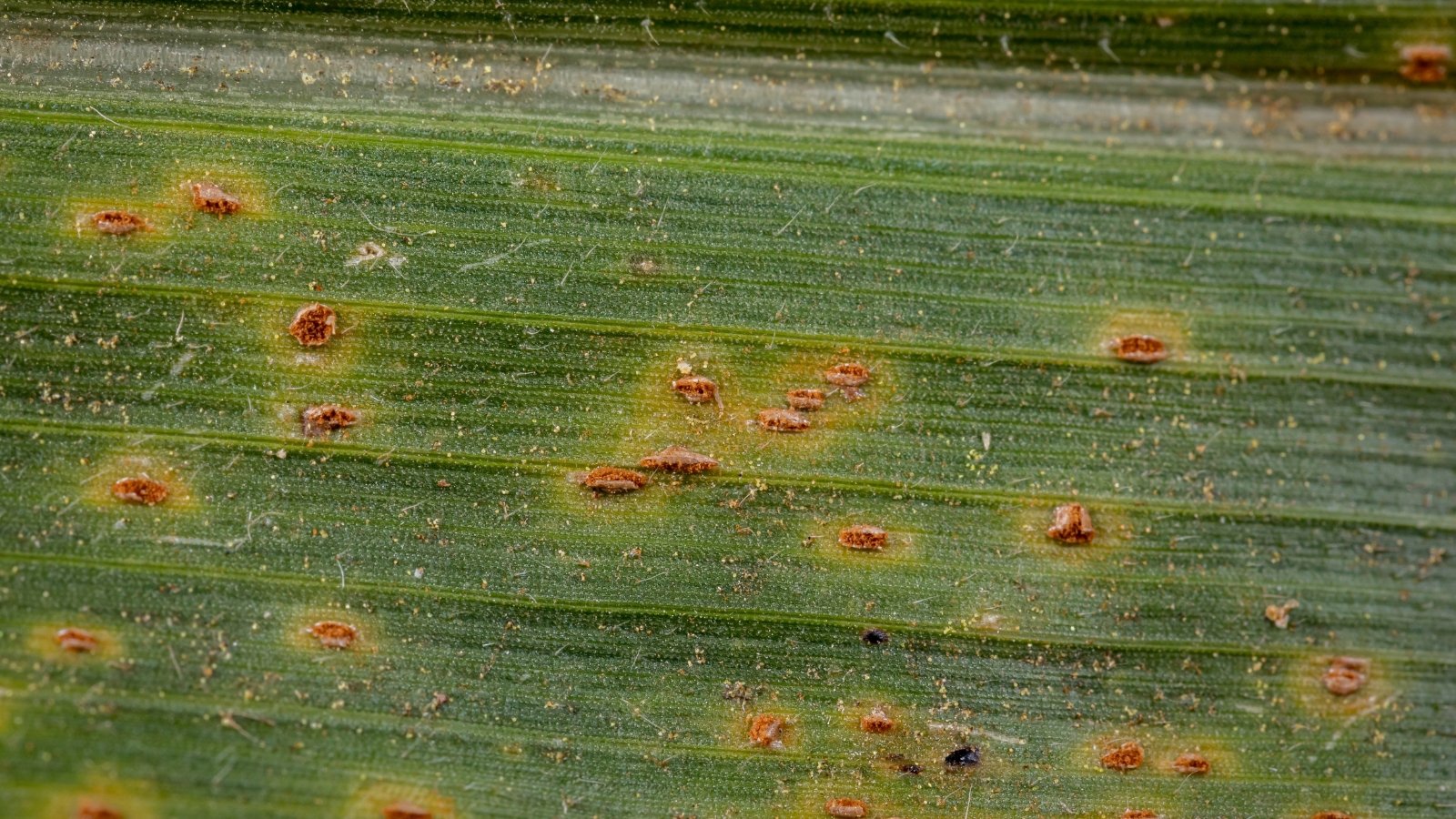
Rust looks like rust! Orange, brown spots appear on leaves; these marks are spore sites where rust reproduces. Spores overwinter on infected plant matter in the soil.
Keep rust away by trimming any afflicted foliage and disposing of it away from the garden. Ensure it doesn’t overwinter by removing annuals at the end of the season, letting them decompose away from your garden. In severe cases, an organic fungicide works to kill the disease.
Frequently Asked Questions
Although technically non-toxic to animals and humans, blue thimble flowers are not generally edible. They taste bitter, providing better food for pollinators than they do for us humans.
Find seeds online on their own or in pollinator mixes. Western U.S. nurseries that sell seeds should have this flower in stock from spring through fall.
Yes! Gilia capitata is the scientific name for the blue thimble flower. This wildflower also goes by the common names globe gilia and blue gilia.
